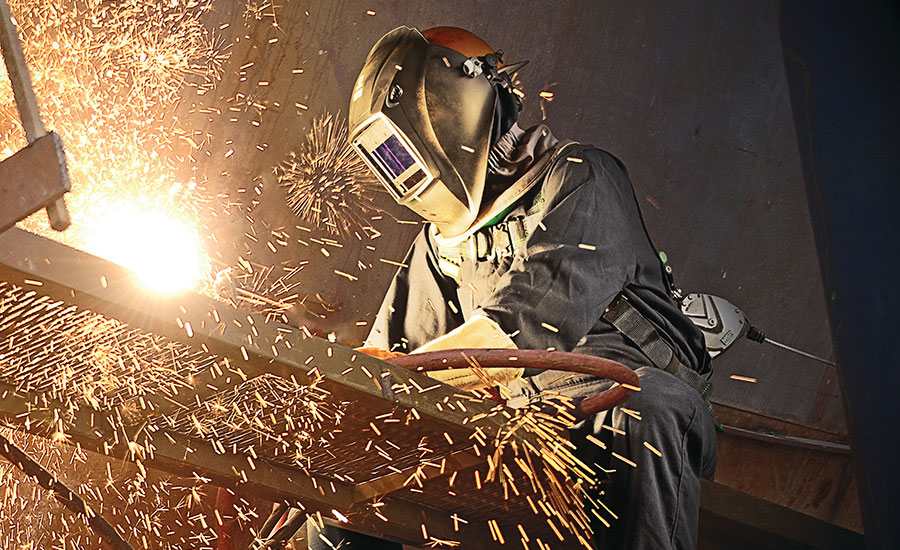The Importance of Welding WPS: Ensuring Quality and Safety in Your Projects
The Importance of Welding WPS: Ensuring Quality and Safety in Your Projects
Blog Article
Achieving Welding Quality: Unveiling the Tricks of WPS Implementation and Optimization
In the world of welding, achieving quality is a pursuit that rests on the meticulous application and optimization of Welding Treatment Requirements (WPS) These fundamental papers work as the backbone of welding procedures, determining the specifications and treatments essential for creating high-grade welds regularly. Nonetheless, the secrets to unlocking the complete potential of WPS lie not just in understanding its significance yet also in understanding the intricacies of its application and optimization. By diving right into the key aspects, approaches, challenges, and finest techniques connected with WPS, a globe of welding quality waits for those that are eager to explore its depths.
Importance of WPS in Welding
The Significance of Welding Treatment Specs (WPS) in the welding market can not be overstated, offering as the backbone for ensuring uniformity, high quality, and security in welding procedures. A WPS supplies detailed directions on just how welding is to be accomplished, consisting of crucial variables such as products, welding procedures, joint layout, filler steels, interpass and preheat temperature levels, welding currents, voltages, traveling rates, and a lot more. By adhering to a distinct WPS, welders can keep harmony in their job, causing constant weld high quality across different projects.

Key Aspects of WPS
Discussing the important components of a welding treatment specification (WPS) is necessary for understanding its function in welding procedures. A comprehensive WPS consists of numerous crucial elements that assist welders in attaining high quality and consistency in their job. One vital aspect of a WPS is the welding procedure specification, which describes the details welding procedures to be used, such as gas tungsten arc welding (GTAW) or protected steel arc welding (SMAW) Additionally, the WPS consists of details on the welding materials, such as the kind and specs of the base steel and filler steel to be made use of. The WPS also specifies necessary variables like welding criteria, preheat and interpass temperature demands, and post-weld warm therapy procedures. In addition, it consists of information on joint design, fit-up, and any type of special methods or preventative measures essential for the welding procedure. By including these key elements into the WPS, welding procedures can be standardized, guaranteeing high quality, effectiveness, and security in welding procedures.
Strategies for WPS Optimization

Second of all, training and qualification of welding personnel according to the certain needs of the WPS is paramount. Offering detailed training programs and making certain that welders are licensed to implement procedures described in the WPS can cause better welds and reduced rework.
Additionally, leveraging technology such as welding software application and tracking systems can assist in maximizing WPS. These devices can aid in monitoring variables, ensuring parameters are within specified limits, and providing real-time responses to welders, allowing them to make prompt changes for boosted weld top quality.
Usual Obstacles and Solutions
Encountering barriers in applying the strategies for WPS optimization can prevent welding procedures' performance and top quality. One usual obstacle is insufficient training or understanding of the welding procedure specs (WPS) among the welding team. This can lead to improper implementation of welds, causing defects and rework. To address this, thorough training Get More Information programs need to be executed to guarantee that all welders excel in translating and using WPS accurately.
One more challenge is the absence of appropriate documentation and record-keeping, which is important for WPS optimization. Without clear documents of welding specifications, products made use of, and inspection results, it becomes difficult to identify locations for enhancement and guarantee consistency in welding processes. Applying a robust documentation system, such as digital welding monitoring software application, can assist streamline record-keeping and promote data evaluation for constant improvement.
Furthermore, inconsistent welding devices calibration and maintenance can present a significant obstacle to WPS optimization. Regular devices checks, calibration, and maintenance timetables should be go to the website complied with strictly to make certain that welding specifications are properly controlled and kept within the specified resistances (welding WPS). By resolving these typical obstacles with proactive options, welding operations can improve performance, quality, and general welding quality
Best Practices for WPS Application
To make certain successful WPS application in welding procedures, adherence to industry requirements and thorough attention to detail are vital. When initiating WPS application, it is vital to start by thoroughly comprehending the particular welding demands of the task. This entails an extensive evaluation of the welding treatment requirements, products to be bonded, and the ecological conditions in which the welding will take location.
When the needs are clear, the following action is to pick the appropriate welding procedure that lines up with these specs. This includes getting in touch with the relevant codes and standards, such as those offered by the American Welding Society (AWS) or the International Organization for Standardization (ISO), to guarantee compliance and high quality.
Moreover, recording the whole WPS application procedure is crucial for traceability and quality control. Detailed documents should be kept regarding welding parameters, material prep work, interpass and preheat temperature levels, welding consumables utilized, and any kind of inconsistencies from the initial treatment. Routine audits and evaluations of the WPS can assist identify areas for improvement and make certain recurring optimization of the welding procedure.


Conclusion
Finally, the application and optimization of Welding Procedure Specs (WPS) is essential for attaining welding excellence. By recognizing the crucial elements of WPS, carrying out reliable strategies for optimization, addressing typical obstacles, and complying with finest techniques, welders can guarantee top notch welds and safe working problems. It is necessary for professionals in the welding sector to prioritize this article the appropriate execution of WPS to enhance general welding efficiency and achieve preferred end results.
The Importance of Welding Treatment Requirements (WPS) in the welding sector can not be overemphasized, offering as the foundation for ensuring consistency, high quality, and safety and security in welding operations. A WPS offers thorough instructions on how welding is to be brought out, including necessary variables such as products, welding procedures, joint design, filler metals, interpass and preheat temperature levels, welding currents, voltages, traveling speeds, and much more. One important facet of a WPS is the welding procedure specification, which describes the particular welding procedures to be made use of, such as gas tungsten arc welding (GTAW) or secured steel arc welding (SMAW) By incorporating these key components right into the WPS, welding treatments can be standard, ensuring quality, efficiency, and safety in welding operations.
It is crucial for specialists in the welding sector to focus on the correct execution of WPS to boost total welding efficiency and accomplish preferred results.
Report this page